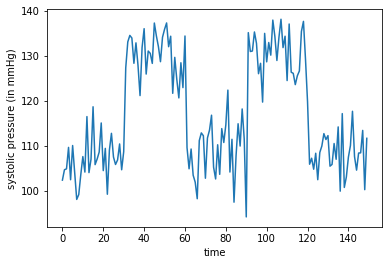|
N Of 1 Trial
An N of 1 trial is a clinical trial in which a single patient is the entire trial, a single case study. A trial in which random allocation can be used to determine the order in which an experimental and a control intervention are given to a patient is an N of 1 randomized controlled trial. The order of experimental and control interventions can also be fixed by the researcher. This type of study has enabled practitioners to achieve experimental progress without the overwhelming work of designing a group comparison study. It can be very effective in confirming causality. This can be achieved in many ways. One of the most common procedures is the ABA withdrawal experimental design, where the patient problem is measured before a treatment is introduced (baseline) and then measured again during the treatment and finally when the treatment has terminated. If the problem vanished during the treatment it can be established that the treatment was effective. But the N=1 study can also be ex ... [...More Info...] [...Related Items...] OR: [Wikipedia] [Google] [Baidu] |
Clinical Trial
Clinical trials are prospective biomedical or behavioral research studies on human participants designed to answer specific questions about biomedical or behavioral interventions, including new treatments (such as novel vaccines, drugs, dietary choices, dietary supplements, and medical devices) and known interventions that warrant further study and comparison. Clinical trials generate data on dosage, safety and efficacy. They are conducted only after they have received health authority/ethics committee approval in the country where approval of the therapy is sought. These authorities are responsible for vetting the risk/benefit ratio of the trial—their approval does not mean the therapy is 'safe' or effective, only that the trial may be conducted. Depending on product type and development stage, investigators initially enroll volunteers or patients into small pilot studies, and subsequently conduct progressively larger scale comparative studies. Clinical trials can vary i ... [...More Info...] [...Related Items...] OR: [Wikipedia] [Google] [Baidu] |
Causal Inference
Causal inference is the process of determining the independent, actual effect of a particular phenomenon that is a component of a larger system. The main difference between causal inference and inference of association is that causal inference analyzes the response of an effect variable when a cause of the effect variable is changed. The science of why things occur is called etiology. Causal inference is said to provide the evidence of causality theorized by causal reasoning. Causal inference is widely studied across all sciences. Several innovations in the development and implementation of methodology designed to determine causality have proliferated in recent decades. Causal inference remains especially difficult where experimentation is difficult or impossible, which is common throughout most sciences. The approaches to causal inference are broadly applicable across all types of scientific disciplines, and many methods of causal inference that were designed for certain discipl ... [...More Info...] [...Related Items...] OR: [Wikipedia] [Google] [Baidu] |
Crossover Study
In medicine, a crossover study or crossover trial is a longitudinal study in which subjects receive a sequence of different treatments (or exposures). While crossover studies can be observational studies, many important crossover studies are controlled experiments, which are discussed in this article. Crossover designs are common for experiments in many scientific disciplines, for example psychology, pharmaceutical science, and medicine. Randomized, controlled crossover experiments are especially important in health care. In a randomized clinical trial, the subjects are randomly assigned to different arms of the study which receive different treatments. When the trial has a repeated measures design, the same measures are collected multiple times for each subject. A crossover trial has a repeated measures design in which each patient is assigned to a sequence of two or more treatments, of which one may be a standard treatment or a placebo. Nearly all crossover are designed to ha ... [...More Info...] [...Related Items...] OR: [Wikipedia] [Google] [Baidu] |
Single-subject Design
In design of experiments, single-subject curriculum or single-case research design is a research design most often used in applied fields of psychology, education, and human behaviour in which the subject serves as his/her own control, rather than using another individual/group. Researchers use single-subject design because these designs are sensitive to individual organism differences vs group designs which are sensitive to averages of groups. The logic behind single subject designs is 1) Prediction, 2) Verification, and 3) Replication. The baseline data predicts behaviour by affirming the consequent. Verification refers to demonstrating that the baseline responding would have continued had no intervention been implemented. Replication occurs when a previously observed behaviour changed is reproduced.Cooper, J. O., Heron, T. E., & Heward, W. L. (2007). Applied behavior analysis (2nd ed.). Columbus, OH: Merrill Prentice Hall. There can be large numbers of subjects in a research study ... [...More Info...] [...Related Items...] OR: [Wikipedia] [Google] [Baidu] |
Applied Behavior Analysis
Applied behavior analysis (ABA), also called behavioral engineering, is a psychological intervention that applies empirical approaches based upon the principles of respondent and operant conditioning to change behavior of social significance.See also footnote number "(1)" of nd the whole "What is ABA?" section of Where the same definition is given, (or quoted), and it credits (or mentions) both the source "Baer, Wolf & Risley, 1968" (Drs. Donald Baer, PhD, Montrose Wolf, PHD and Todd R. Risley, PhD, (Professor Emeritus of Psychology at the University of Alaska) were psychologists who developed science of applied behavior analysis) and ianother source, called "Sulzer-Azaroff & Mayer, 1991". Beth Sulzer-Azaroff is a psychologist at University of Massachusetts Amherst, Department of Psychology It is the applied form of behavior analysis; the other two forms are radical behaviorism (or the philosophy of the science) and the experimental analysis of behavior (or basic experime ... [...More Info...] [...Related Items...] OR: [Wikipedia] [Google] [Baidu] |
The Shangri-La Diet
''The Shangri-La Diet'' is both the name of a book by the psychologist Seth Roberts, a professor at Tsinghua University and professor emeritus at UC Berkeley, and the name of the diet that the book advocates. The book discusses consuming 100–400 calories per day in a flavorless food such as extra light olive oil one hour outside of mealtimes as a method of appetite suppression leading to weight loss. Inspiration As a graduate student, Roberts studied animal cognition.Interview with Author Dr. Seth Roberts The Diet Channel As a psychology professor, Roberts read a report by Israel Ramirez, a scientist at the |
Seth Roberts
Seth Roberts (August 17 1953 - April 26 2014) was a professor of psychology at Tsinghua University in Beijing and emeritus professor of psychology at the University of California, Berkeley. He was the author of the bestselling book ''The Shangri-La Diet'',Dubner and Levit"Does the Truth Lie Within? The Accidental Diet" September 11, 2005. on SethRoberts.net and a prolific blogger. He was well known for his work in which led to many discoveries, including his diet, multiple publications and a popular blog.Frauenfelder, Mar Seth Rober ... [...More Info...] [...Related Items...] OR: [Wikipedia] [Google] [Baidu] |
Quantified Self
The quantified self refers both to the cultural phenomenon of self-tracking with technology and to a community of users and makers of self-tracking tools who share an interest in "self-knowledge through numbers". Quantified self practices overlap with the practice of lifelogging and other trends that incorporate technology and data acquisition into daily life, often with the goal of improving physical, mental, and emotional performance. The widespread adoption in recent years of wearable fitness and sleep trackers such as the Fitbit or the Apple Watch, combined with the increased presence of Internet of things in healthcare and in exercise equipment, have made self-tracking accessible to a large segment of the population. Other terms for using self-tracking data to improve daily functioning are auto-analytics, body hacking, self-quantifying, self-surveillance, sousveillance (recording of personal activity), and personal informatics. History According to Riphagen et al., the histo ... [...More Info...] [...Related Items...] OR: [Wikipedia] [Google] [Baidu] |
Counterfactual
Counterfactual conditionals (also ''subjunctive'' or ''X-marked'') are conditional sentences which discuss what would have been true under different circumstances, e.g. "If Peter believed in ghosts, he would be afraid to be here." Counterfactuals are contrasted with indicatives, which are generally restricted to discussing open possibilities. Counterfactuals are characterized grammatically by their use of fake tense morphology, which some languages use in combination with other kinds of morphology including aspect and mood. Counterfactuals are one of the most studied phenomena in philosophical logic, formal semantics, and philosophy of language. They were first discussed as a problem for the material conditional analysis of conditionals, which treats them all as trivially true. Starting in the 1960s, philosophers and linguists developed the now-classic possible world approach, in which a counterfactual's truth hinges on its consequent holding at certain possible worlds where ... [...More Info...] [...Related Items...] OR: [Wikipedia] [Google] [Baidu] |
Attention Deficit Hyperactivity Disorder
Attention deficit hyperactivity disorder (ADHD) is a neurodevelopmental disorder characterised by excessive amounts of inattention, hyperactivity, and impulsivity that are pervasive, impairing in multiple contexts, and otherwise age-inappropriate. ADHD symptoms arise from executive dysfunction, and emotional dysregulation is often considered a core symptom. In children, problems paying attention may result in poor school performance. ADHD is associated with other neurodevelopmental and mental disorders as well as some non-psychiatric disorders, which can cause additional impairment, especially in modern society. Although people with ADHD struggle to focus on tasks they are not particularly interested in completing, they are often able to maintain an unusually prolonged and intense level of attention for tasks they do find interesting or rewarding; this is known as hyperfocus. The precise causes of ADHD are unknown in the majority of cases. Genetic factors play an impor ... [...More Info...] [...Related Items...] OR: [Wikipedia] [Google] [Baidu] |
Random Allocation
In statistics, quality assurance, and survey methodology, sampling is the selection of a subset (a statistical sample) of individuals from within a statistical population to estimate characteristics of the whole population. Statisticians attempt to collect samples that are representative of the population in question. Sampling has lower costs and faster data collection than measuring the entire population and can provide insights in cases where it is infeasible to measure an entire population. Each observation measures one or more properties (such as weight, location, colour or mass) of independent objects or individuals. In survey sampling, weights can be applied to the data to adjust for the sample design, particularly in stratified sampling. Results from probability theory and statistical theory are employed to guide the practice. In business and medical research, sampling is widely used for gathering information about a population. Acceptance sampling is used to determine if ... [...More Info...] [...Related Items...] OR: [Wikipedia] [Google] [Baidu] |
Peripheral Neuropathy
Peripheral neuropathy, often shortened to neuropathy, is a general term describing disease affecting the peripheral nerves, meaning nerves beyond the brain and spinal cord. Damage to peripheral nerves may impair sensation, movement, gland, or organ function depending on which nerves are affected; in other words, neuropathy affecting motor, sensory, or autonomic nerves result in different symptoms. More than one type of nerve may be affected simultaneously. Peripheral neuropathy may be acute (with sudden onset, rapid progress) or chronic (symptoms begin subtly and progress slowly), and may be reversible or permanent. Common causes include systemic diseases (such as diabetes or leprosy), hyperglycemia-induced glycation, vitamin deficiency, medication (e.g., chemotherapy, or commonly prescribed antibiotics including metronidazole and the fluoroquinolone class of antibiotics (such as ciprofloxacin, levofloxacin, moxifloxacin)), traumatic injury, ischemia, radiation therapy, excessi ... [...More Info...] [...Related Items...] OR: [Wikipedia] [Google] [Baidu] |

.jpg)
